Which three actions should you perform in sequence?
Case Study 2 – Coho Winery
LabelMaker app
Coho Winery produces bottles, and distributes a variety of wines globally. You are developer implementing highly scalable and resilient applications to support online order processing by using Azure solutions.
Coho Winery has a LabelMaker application that prints labels for wine bottles. The application sends data to several printers. The application consists of five modules that run independently on virtual machines (VMs). Coho Winery plans to move the application to Azure and continue to support label creation.
External partners send data to the LabelMaker application to include artwork and text for custom label designs.
Data
You identify the following requirements for data management and manipulation:
– Order data is stored as nonrelational JSON and must be queried using Structured Query Language (SQL).
– Changes to the Order data must reflect immediately across all partitions. All reads to the Order data must fetch the most recent writes.
You have the following security requirements:
– Users of Coho Winery applications must be able to provide access to documents, resources, and applications to external partners.
– External partners must use their own credentials and authenticate with their organization’s identity management solution.
– External partner logins must be audited monthly for application use by a user account administrator to maintain company compliance.
– Storage of e-commerce application settings must be maintained in Azure Key Vault.
– E-commerce application sign-ins must be secured by using Azure App Service authentication and Azure Active Directory (AAD).
– Conditional access policies must be applied at the application level to protect company content
– The LabelMaker applications must be secured by using an AAD account that has full access to all namespaces of the Azure Kubernetes Service (AKS) cluster.
LabelMaker app
Azure Monitor Container Health must be used to monitor the performance of workloads that are deployed to Kubernetes environments and hosted on Azure Kubernetes Service (AKS).
You must use Azure Container Registry to publish images that support the AKS deployment.
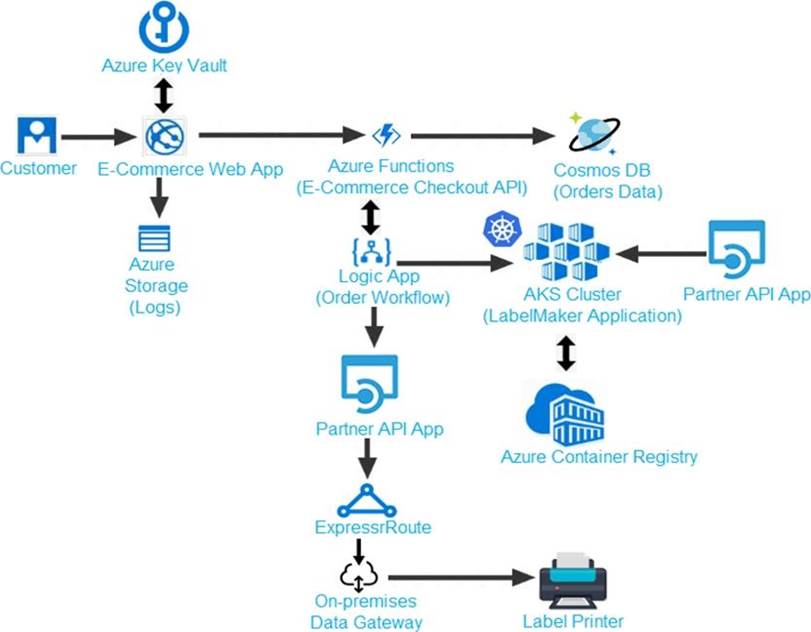
Calls to the Printer API App fail periodically due to printer communication timeouts.
Printer communications timeouts occur after 10 seconds. The label printer must only receive up to 5 attempts within one minute.
The order workflow fails to run upon initial deployment to Azure.
Order json.
Relevant portions of the app files are shown below. Line numbers are included for reference only.
This JSON file contains a representation of the data for an order that includes a single item.
Order. json
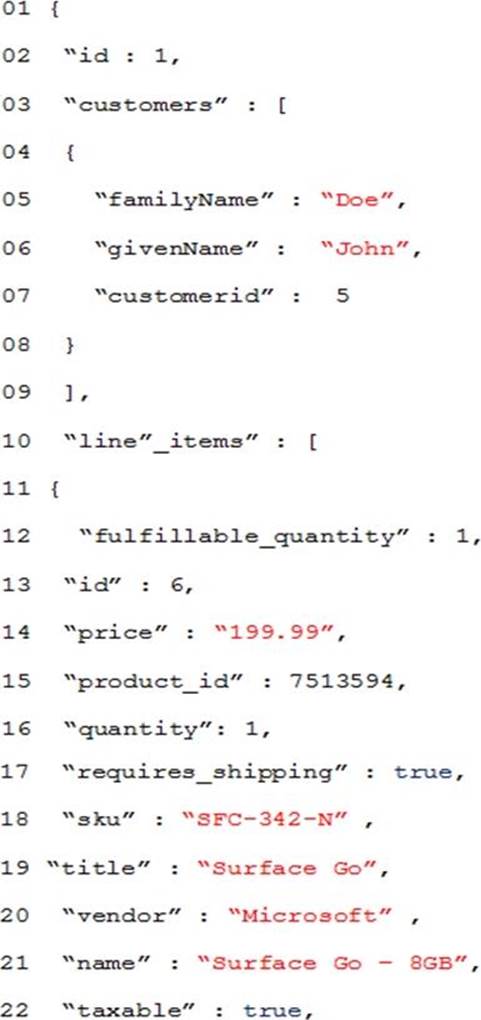
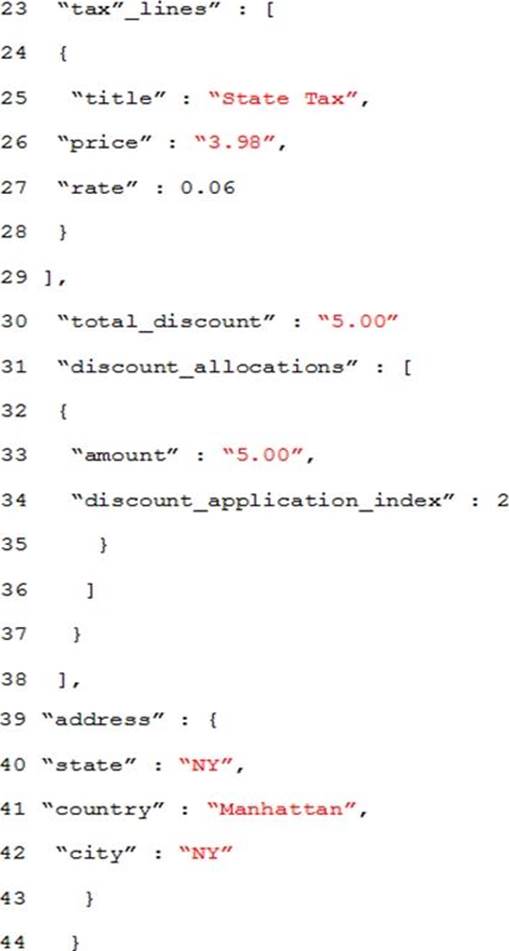
Drag and Drop Question
You need to deploy a new version of the LabelMaker application.
Which three actions should you perform in sequence? To answer, move the appropriate actions from the list of actions to the answer area and arrange them in the correct order. NOTE: Each correct selection is worth one point.
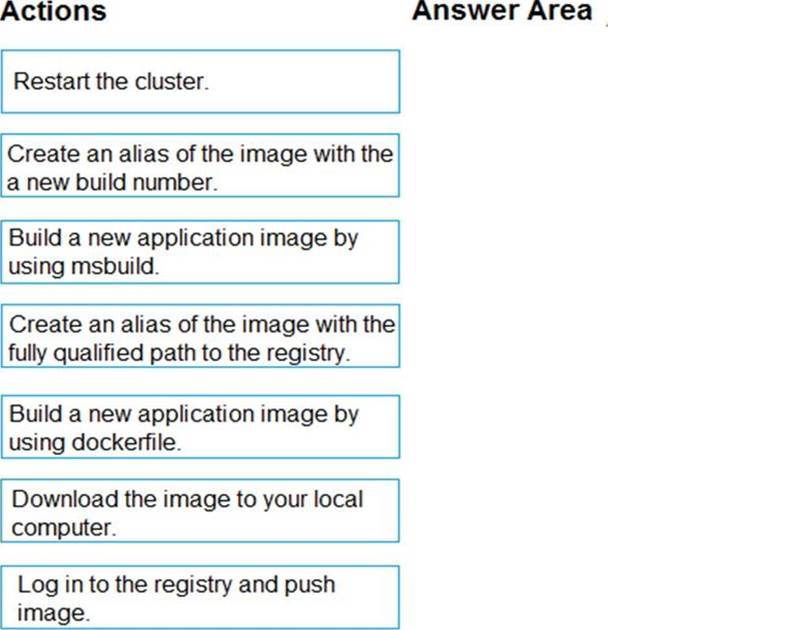
Answer: 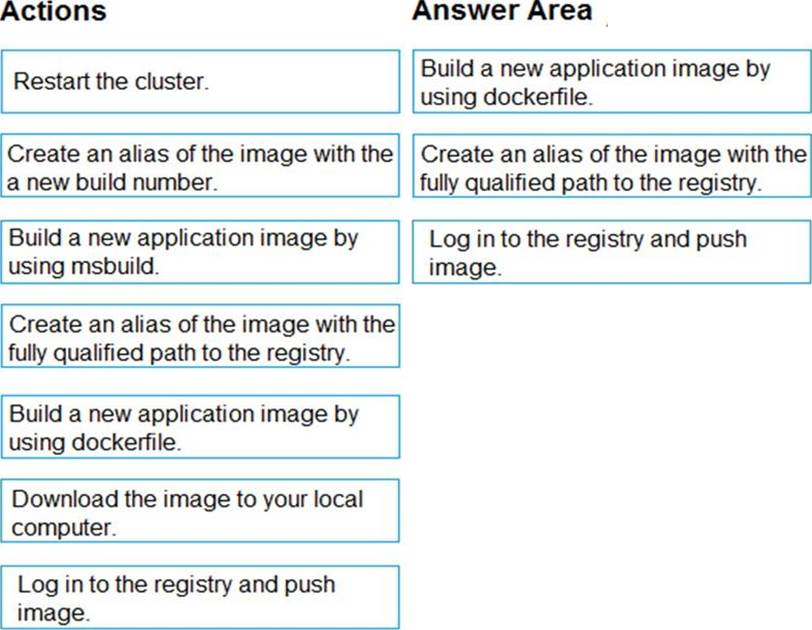
Explanation:
Step 1: Build a new application image by using dockerfile
Step 2: Create an alias if the image with the fully qualified path to the registry
Before you can push the image to a private registry, you’ve to ensure a proper image name. This can be achieved using the docker tag command. For demonstration purpose, we’ll use Docker’s hello world image, rename it and push it to ACR.
# pulls hello-world from the public docker hub
$ docker pull hello-world
# tag the image in order to be able to push it to a private registry
$ docker tag hello-word <REGISTRY_NAME>/hello-world
# push the image
$ docker push <REGISTRY_NAME>/hello-world
Step 3: Log in to the registry and push image
In order to push images to the newly created ACR instance, you need to login to ACR form the Docker CLI. Once logged in, you can push any existing docker image to your ACR instance.
Scenario:
Coho Winery plans to move the application to Azure and continue to support label creation.
LabelMaker app
Azure Monitor Container Health must be used to monitor the performance of workloads that are deployed to Kubernetes environments and hosted on Azure Kubernetes Service (AKS).
You must use Azure Container Registry to publish images that support the AKS deployment.
References:
https://thorsten-hans.com/how-to-use-a-private-azure-container-registry-with-kubernetes-
9b86e67b93b6
https://docs.microsoft.com/en-us/azure/container-registry/container-registry-tutorial-quick-task
Latest AZ-204 Dumps Valid Version with 254 Q&As
Latest And Valid Q&A | Instant Download | Once Fail, Full Refund

